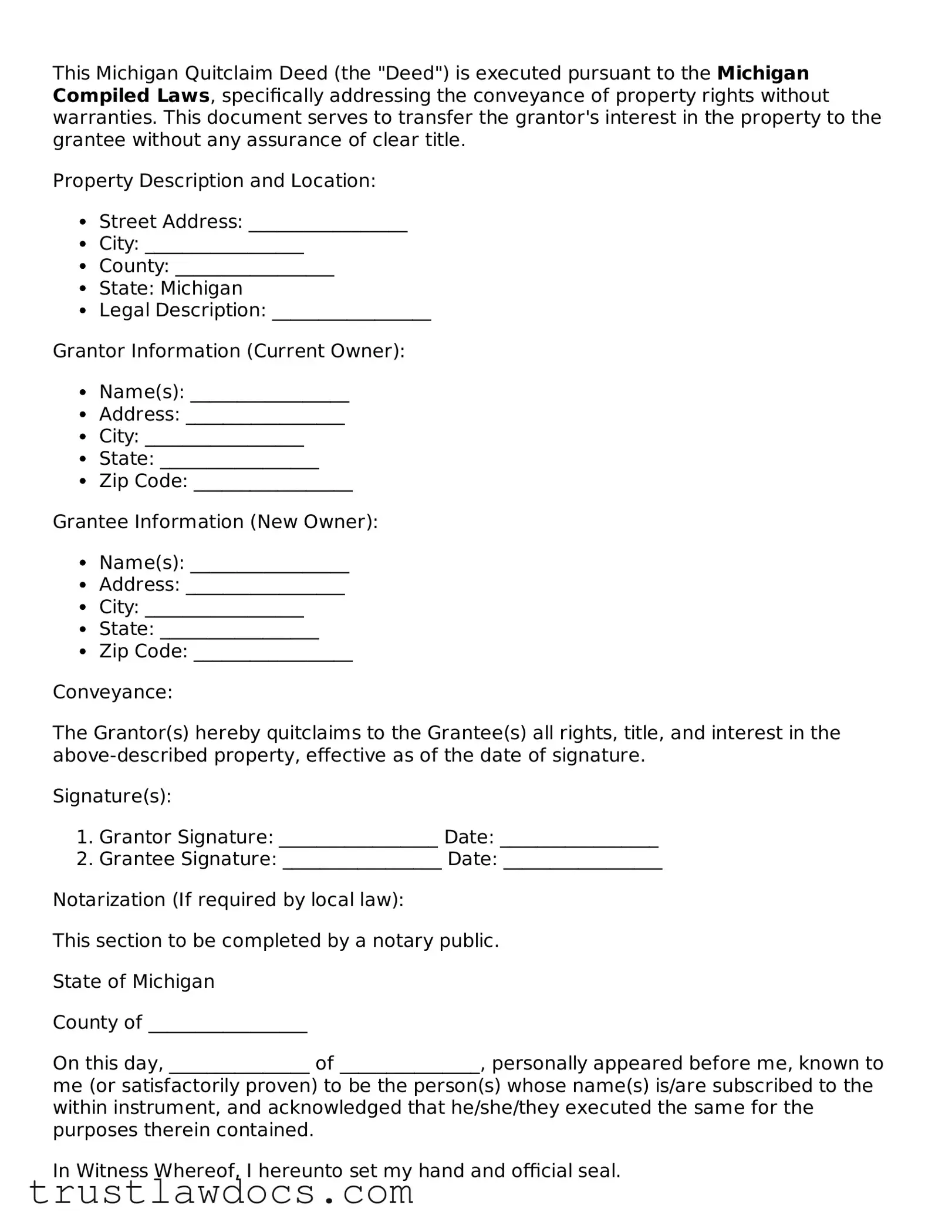What is a Quitclaim Deed in Michigan?
A Quitclaim Deed in Michigan is a legal document used to transfer an interest in real property from one person (the grantor) to another (the grantee) without any warranties of title. It is often used among family members or close associates, where trust is not an issue, to quickly transfer property. This deed merely transfers whatever interest the grantor has in the property, if any, without guaranteeing that the property is free of claims or liens.
When should a Quitclaim Deed be used in Michigan?
A Quitclaim Deed is appropriate in situations where the property is being transferred without a traditional sale. Examples include adding or removing a spouse's name from the title, transferring property to a trust, or changing the name on the title due to marriage or divorce. It is crucial to consult with a professional to ensure this is the right document for your circumstances, as it offers no protection for the buyer (grantee).
What information is required to complete a Michigan Quitclaim Deed?
To complete a Quitclaim Deed in Michigan, specific information is needed: the names and addresses of the grantor and grantee, a legal description of the property, the parcel number (if available), the date of the transfer, and the amount of consideration (if any). The deed must be signed by the grantor in front of a notary public and then filed with the county register of deeds where the property is located.
Is a Quitclaim Deed in Michigan subject to any taxes or fees?
Yes, the transfer of property using a Quitclaim Deed in Michigan may be subject to state and county transfer taxes, depending on the circumstances of the transfer. Additionally, there will be a fee to record the deed with the county register of deeds. These costs can vary, so it's advisable to check with the local register of deeds or a legal professional to understand the specific fees and taxes that may apply to your situation.
Can a Quitclaim Deed in Michigan be revoked?
Once a Quitclaim Deed has been executed (signed, notarized, and recorded), it cannot be revoked unilaterally by the grantor. Any change or revocation would require the grantee's consent and a new deed to reflect the change. It is essential to be certain of the decision to transfer property using a Quitclaim Deed, as reversing the process can be complex.
Do both parties need to agree for a Quitclaim Deed to be valid in Michigan?
For a Quitclaim Deed to be valid in Michigan, the grantor must agree to the transfer, as they are relinquishing their rights to the property. The grantee is not required to sign the deed. However, the deed must be delivered to and accepted by the grantee for the property transfer to be effective. Ensuring clear communication and agreement between both parties before proceeding with a Quitclaim Deed is beneficial to avoid any misunderstandings.
